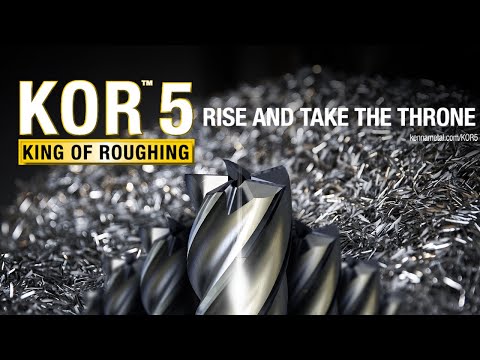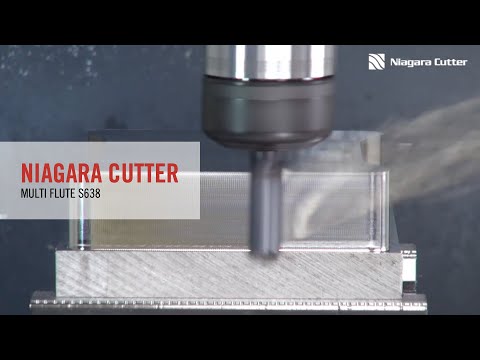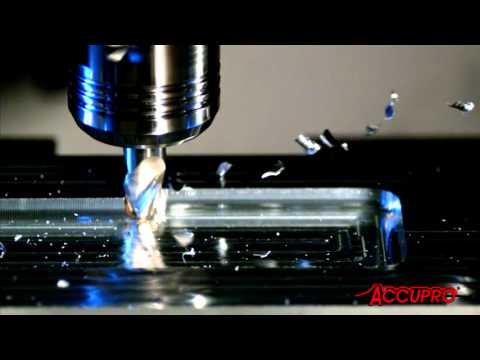When to Upgrade Your End Mills
Compare and contrast some of the best end mills on the market.
Compare and contrast some of the best end mills on the market.
Hitting the sweet spot for upgrading tools is tricky. Go all in, and you might not get the best return on your investment. Go too cheap, and you might stymie productivity. Here’s a look at how to decide if or when to pop for a more high-end end mill.
Poor tool life. Can’t make that production quota. Tough-to-hold tolerances. Any of these sound familiar?
For a milling machinist, those are just a few of the reasons to consider upgrading to a better end mill. The question then becomes, which one to buy? And will the benefits justify the higher cost of a premium tool?
The answer depends on the material you’re machining and the performance potential of your machine tool. In some situations, purchasing the end mill equivalent of a BMW X5 might be a no-brainer. In others, the gains will be minimal, and a less expensive, general-purpose cutting tool could be all that’s needed.
Either way, reaching the right decision is critical to successful and cost-effective machining operations.
If you’re confused about which way to go, there are plenty of people able to steer you in the right direction, starting with Bernd Fiedler, global product manager for solid end milling at Kennametal.
If you’re looking for maximum metal removal in a broad range of alloys, Fiedler suggests that you need look no further than the company’s HARVI I TE, a multipurpose, solid carbide, four-flute end mill suitable for a variety of milling operations in steel, stainless steel, cast iron and high-temp alloys.
“The HARVI I TE combines several proprietary features such as an eccentric faceted relief, twisted end face, nonlinear gashing, and a W-shaped flute design,” Fiedler says. “Together with our KCPM15 and KCSM15 AlTiN grades, it provides excellent tool life and significantly more aggressive cutting parameters for practically everything but aluminum and other nonferrous alloys.”
For these, he recommends Kennametal’s KOR 5, a five-flute, coolant-fed, high-velocity roughing end mill that promises feed rates up to 66 percent higher than competing three-flute tools in aluminum.
Here again, a variety of innovations take the KOR 5’s performance well beyond traditional end mill designs, including a Safe-Lock shank for zero pullout and a chip-breaking flute that ensures maximum coolant flow and chip evacuation.

Even though Kennametal advertises the KOR 5 as “the King of Roughing,” Fiedler says it generates sufficiently smooth surfaces—leading many shops to use it for finishing work as well. “For deep cavities and large parts like those in the aerospace industry, the KOR 5 is amazing,” he says.
Seco Tools offers similar wares in its Niagara Cutter product portfolio. Shops must embrace the latest cutting-tool technology if they want to take full advantage of modern toolpaths and newer machine tools, says William Sebring, product manager for Niagara Cutter.
“Application-specific cutting tools perform much better in these applications,” he says. “For example, there’s Niagara’s five-flute Stabilizer STS540 and STR540, as well as the S638, S738 and S938 multi-flute family of end mills, each engineered to perform exceptionally well with trochoidal and other high-performance toolpaths. This is a strategy that an increasing number of shops are pursuing, due to the ability to improve throughput and tool life, even on lighter-duty machines.”
As with most high-performance end mill providers, Niagara Cutter has developed bold new geometries meant to maximize metal removal rates, even in difficult materials.
Much of this effort focuses on flute design. Special edge preparation increases cutting edge strength, Sebring says. Plus, variable flute, variable pitch end mills help reduce the harmonics that lead to chatter, as do cylindrical margins when milling nonferrous materials.
Because of these design elements, the Stabilizer 2.0 could double feed rates, while the multi-flute family of end mills allows for “highly efficient metal removal, clearing pockets three to four times faster.”

“A major benefit of high-performance milling strategies is a much more reliable, repeatable process,” Sebring says. “When you take lighter depths of cut, cutting-tool loads are reduced, and feed rates can be increased. The process becomes more stable, predictable and efficient, ultimately leading to a lower cost per part.”
Long known for providing well-priced, midtier end mills to serve a wide range of shop needs, Accupro now has a new HS Series of high-performance end mills. In all, this adds more than 900 end mills to MSC’s Accupro offerings, says MSC metalworking specialist Terry Stahl.
These new end mills are designed for versatility across several materials, including steel, stainless steel, cast iron, titanium, high-temperature alloys and hardened materials common in the aerospace, automotive, energy, medical, and mold and die work.
Some of these new HS end mills solve for customers’ greatest challenges and aim to reduce downtime, Stahl says.
The new HS five-flute, variable index, corner radius end mills are ideal for finishing. Built-in chip breakers behind the cutting edge allow for greater metal removal rates in even the gummiest materials, like 304 stainless steel, Stahl says. They prevent long, stringy chips from forming and packing in the flutes.
There’s also an HS seven-flute, corner radius end mill that’s ideal for high-speed roughing and finishing of aircraft components in titanium and other high-temperature alloys.
Finally, there are eight- and 10-flute, square and corner radius end mills for finishing titanium, heat-resistant super alloys and stainless. The multi-length configurations and advanced ALTiCrN PVD coating to ensure smooth cutting action with optimum thermal stability.
Clearly, machine shops have more cutting-tool options available to them than ever before, says Greg Creamer, an MSC metalworking specialist.
But what happens when the newest CNC in the shop arrived just before Y2K? Or when the majority of the machining work is done on manual knee mills? In these environments, does it really make sense to pay a premium for an end mill that probably won’t provide premium results given the setups?
Creamer doesn’t think so. “There are a lot of customers out there who would love to have the newest technology, but the fact is that many of them don’t have the money to do so,” he says. “The Accupro line is a cost-effective yet high-quality cutter for the shop filled with older machines, or for someone that’s doing low-volume work in a variety of different materials.”
A premium end mill will offer greater metal removal capabilities in many applications, he acknowledges. “But there’s no reason to spend more for a cutter, if you can’t get the full use out of it.”
Accupro offers good tool life and metal removal across a range of materials at a competitive price point, Stahl says.

“For the shop that doesn’t own a shiny new Makino or Okuma, is still using conventional milling strategies or is limited to lower spindle speeds, a premium end mill is typically not a good fit,” Stahl explains. “Accupro, on the other hand, provides an excellent middle ground of both price and performance.”
How do you select the right end mill? When do view it valuable to invest in premium end mills?




